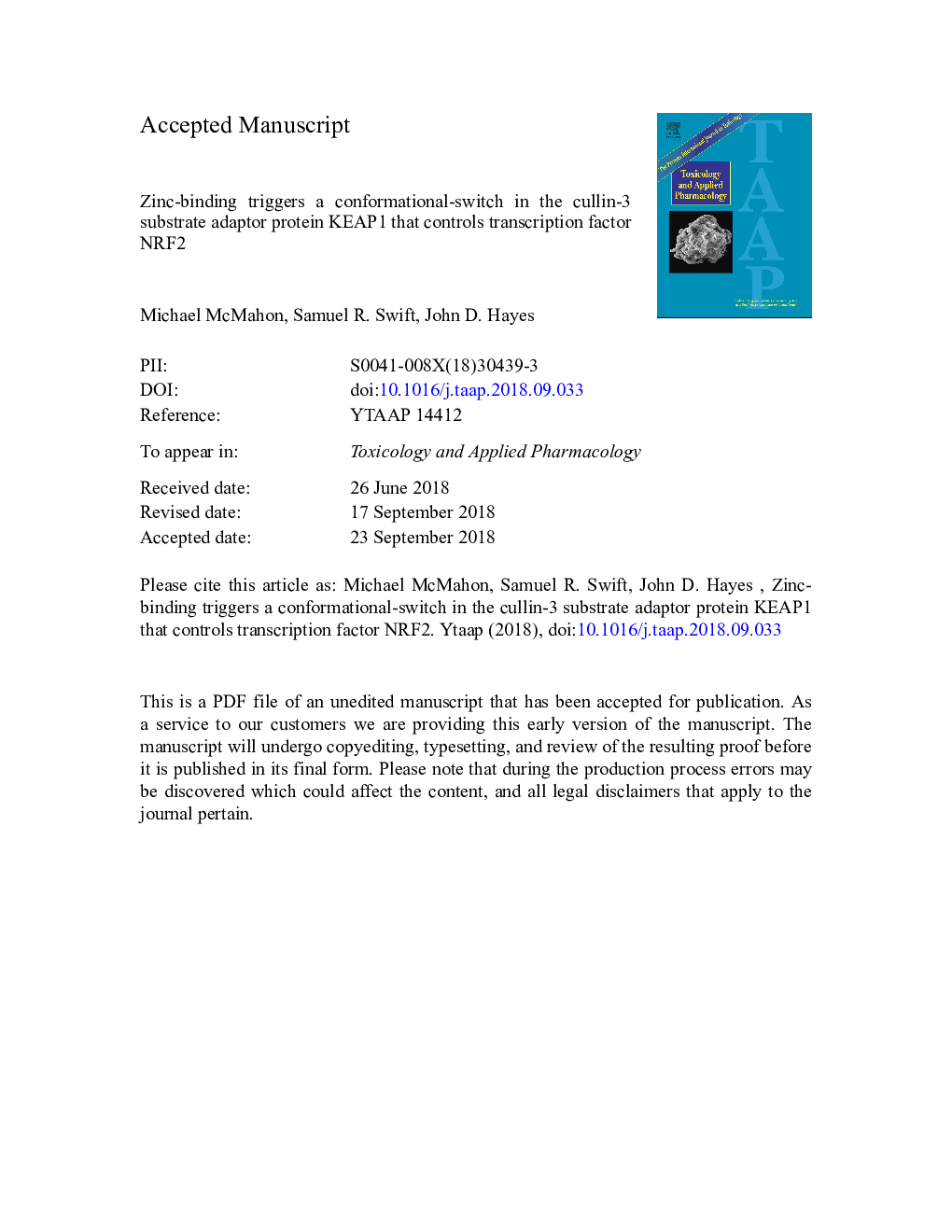| Article ID | Journal | Published Year | Pages | File Type |
|---|---|---|---|---|
| 11023065 | Toxicology and Applied Pharmacology | 2018 | 45 Pages |
Abstract
Kelch-like ECH-associated protein 1 (Keap1) is a cullin-3 (Cul3)-RING ubiquitin ligase (CRL) adaptor/scaffold protein that enables cells to adapt to environmental stressors because modification of certain of its Cys residues initiates de-repression of the NF-E2 p45-related factor-2 (Nrf2) transcription factor. Thus, in normal unstressed cells, the cytoprotective Nrf2 is continuously ubiquitylated by CRLKeap1, thereby ensuring that Nrf2 is efficiently degraded by the proteasome and expression of Nrf2 target genes restricted. By contrast, this process is attenuated in stressed cells, allowing Nrf2 protein to accumulate in the nucleus and induce genes that promote cell survival. It remains unclear how Keap1 senses stress. Previously, we suggested that release of free Zn2+ from damaged proteins represents an endogenous 'danger' signal recognized by Keap1. However, the existence of a Zn2+ sensor in Keap1 is not widely acknowledged. We now present data that support the hypothesis that Keap1 directly senses Zn2+ through a cluster of amino-acids that include His-225, Cys-226, and Cys-613. We show that this mechanism does not require p62/sequestosome-1, an autophagy adaptor protein implicated in metal(loid) sensing by Keap1. Moreover, using a genetically-encoded FRET reporter, we present evidence that binding of Zn2+ triggers a conformational switch in Keap1. The altered conformation of Keap1 is envisaged to perturb the architecture of CRLKeap1, such that bound Nrf2 becomes mis-aligned with respect to the ubiquitin-charged E2 enzyme. These data are consistent with the notion that Keap1 possesses a Zn2+ sensor whose triggering distorts its structure in a fashion that inhibits ubiquitylation of Nrf2 upon CRLKeap1.
Keywords
Related Topics
Life Sciences
Environmental Science
Health, Toxicology and Mutagenesis
Authors
Michael McMahon, Samuel R. Swift, John D. Hayes,
